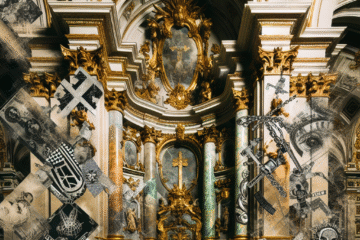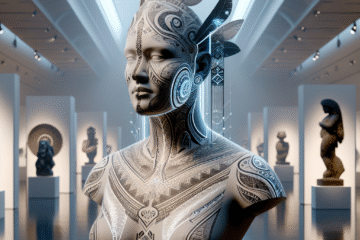I. Introduction
The evolution of a drawing is an important aspect of the art world, as it showcases the creative process of an artist and the various stages that a piece of art goes through before it becomes a finished masterpiece. It allows us to gain insight into the artist’s thought process and techniques, and it can also inspire and guide aspiring artists in their own creative endeavors.
In this article, we will be discussing the different phases that a drawing goes through, from the initial sketching stage to the final finishing touches. We will also be exploring the materials and techniques used during each stage, and how they contribute to the overall development of the drawing.
The first stage in the evolution of a drawing is the sketching phase. During this stage, the artist creates a rough outline of their idea, using basic shapes and lines to capture the main elements of the composition. This is an important step in the process, as it allows the artist to experiment with different compositions and make any necessary changes before moving on to the next stage.
The second stage is the refining phase, where the artist adds more detail and definition to the drawing. They will use a variety of tools such as fine-tip pens and ink to enhance the lines and shapes, and blending tools to create a sense of depth and texture. This stage is crucial in bringing the drawing to life and creating a sense of realism.
The third stage is the coloring phase, where the artist adds color to the drawing. This can be done using a variety of mediums such as paint, markers or pastels. The use of color can greatly impact the overall composition and mood of the drawing, and it is during this stage that the artist can experiment with different color palettes to find the perfect combination.
The final stage is the finishing phase, where the artist makes any final adjustments and adds any finishing touches to the drawing. This can include varnishing to protect the surface of the drawing, framing and matting to enhance its presentation.
In conclusion, the evolution of a drawing is a multi-step process that involves many different techniques and materials. By understanding the various stages of the process, we can gain a deeper appreciation for the art and the artist’s creativity and skill.
II. Sketching Phase
The sketching phase is the first step in the evolution of a drawing and is crucial in the overall development of the piece. It is during this stage that the artist creates a rough outline of their idea, using basic shapes and lines to capture the main elements of the composition. This allows the artist to experiment with different compositions and make any necessary changes before moving on to the next stage.
The process of creating a rough sketch begins with the artist having a clear idea of what they want to depict. They might start by doing a small thumbnail sketch, which is a small, rough drawing used to experiment with different compositions and layouts. Once they are satisfied with the composition, they will then create a larger, more detailed sketch.
The artist will usually use a variety of materials during the sketching phase, such as pencils, charcoal, and erasers. Pencils, both graphite and colored, are a popular choice because they are easy to erase and can produce a wide range of tones. Charcoal is also commonly used, as it can create deep, rich blacks and is well suited for creating dramatic, gestural sketches. Erasers are also an important tool, as they allow the artist to make corrections and adjustments as needed.
When sketching, the artist will often use a combination of line and value to create the illusion of form and depth. Line is used to define the edges of the subject, while value is used to create the illusion of light and shadow. The artist will use different techniques such as hatching, cross-hatching and stippling to create different textures and tones.
The sketching phase is an essential step in the drawing process, as it allows the artist to experiment with different compositions and make any necessary changes before moving on to the next stage. It also allows the artist to test out different materials and techniques, and work out any issues with the composition. A well-done sketch is the foundation for a successful final piece, and it can also stand on its own as a valuable piece of art.
In conclusion, the sketching phase is a crucial step in the evolution of a drawing. It allows the artist to experiment with different compositions and make any necessary changes, while also testing out different materials and techniques. A well-done sketch can serve as the foundation for a successful final piece and also stand on its own as a valuable piece of art.
III. Refining Phase
The refining phase is the second step in the evolution of a drawing, where the artist adds more detail and definition to the sketch. This stage is crucial in bringing the drawing to life and creating a sense of realism. The artist will use a variety of tools such as fine-tip pens, ink, and blending tools to enhance the lines and shapes, and create a sense of depth and texture.
The process of refining a sketch begins with the artist looking at the sketch and identifying areas that need more attention. They will then use fine-tip pens or ink to add more detail to the lines, such as hatching and cross-hatching to create different textures and tones. They will also use blending tools such as blending stumps or their fingers to soften and smooth out areas, creating a sense of depth and dimension.
In this stage, the artist will also use a technique called “scumbling” to create the illusion of texture. Scumbling involves using a dry brush or pencil to add random strokes over an area, creating a sense of texture without defining specific details. This technique is particularly useful in creating the illusion of fur, hair, or other textured surfaces.
The use of ink is also important in the refining phase, it can create a more dynamic and expressive line than pencils. Ink can be applied with pens, brushes, or nibs and it allows for a greater range of line widths, from fine lines to bold strokes, which can add a sense of movement and energy to the drawing.
The refining phase is also a great opportunity for the artist to make any necessary changes or corrections to the composition. They can add or remove elements, adjust the placement of objects and make any other changes to create a more harmonious and balanced composition.
In conclusion, the refining phase is an important step in the evolution of a drawing, where the artist adds more detail and definition to the sketch, bringing it to life and creating a sense of realism. The artist will use a variety of tools such as fine-tip pens, ink, and blending tools to enhance the lines and shapes, and create a sense of depth and texture. The use of techniques like scumbling, and ink application can also play an important role in this phase to create the illusion of texture and movement. Additionally, this stage also allows the artist to make any necessary changes or corrections to the composition, leading to a more harmonious and balanced final piece.
IV. Coloring Phase
The coloring phase is the third step in the evolution of a drawing, where the artist adds color to the piece. This can be done using a variety of mediums such as paint, markers or pastels. The use of color can greatly impact the overall composition and mood of the drawing, and it is during this stage that the artist can experiment with different color palettes to find the perfect combination.
The process of adding color to a drawing begins with the artist selecting the appropriate medium. Different mediums have different properties, and the artist will choose one based on the desired effect they want to achieve. For example, paint can create a more traditional, finished look, while markers or pastels can create a more sketchy, expressive look.
Once the medium has been selected, the artist will begin by blocking in the basic colors. This involves applying the main colors to the large areas of the drawing, such as the sky, water, or skin. The artist will then begin to add more details and depth to the drawing by layering different colors and using techniques such as glazing and scumbling.
Glazing is a technique where the artist applies a thin, transparent layer of color over an existing layer. This can be used to create a sense of depth and luminosity, and it can also be used to correct mistakes or make adjustments to the color. Scumbling is a technique where the artist applies a dry brush or pencil over an area, creating a sense of texture without defining specific details.
When adding color, the artist will also consider the color theory principles, such as complementary colors, analogous colors, and color temperature. These principles can help the artist to create a harmonious and balanced color scheme, and can also be used to create a specific mood or atmosphere in the drawing.
In conclusion, the coloring phase is an important step in the evolution of a drawing, where the artist adds color to the piece. The use of color can greatly impact the overall composition and mood of the drawing, and it is during this stage that the artist can experiment with different color palettes to find the perfect combination. Different mediums such as paint, markers or pastels can be used, each with its own properties and effects. Techniques like glazing and scumbling can also be used to add depth and texture to the color. Additionally, the artist will also consider the color theory principles to create a harmonious and balanced color scheme and to achieve a specific mood or atmosphere in the drawing.
V. Finishing Phase
The finishing phase is the final step in the evolution of a drawing, where the artist makes any last-minute adjustments and adds any finishing touches to the piece. This can include varnishing to protect the surface of the drawing, framing and matting to enhance its presentation. The finishing phase is an important step as it helps to preserve the drawing and makes it ready for display or sale.
The process of finalizing a drawing begins with the artist taking a step back and looking at the piece as a whole. They will assess the composition, color, and overall aesthetics of the drawing and make any necessary adjustments. This might include making small changes to the composition or color, or adding any final details or highlights.
Once the artist is satisfied with the final drawing, they will then prepare it for preservation and display. One important step is varnishing the drawing. Varnishing is the process of applying a protective coating over the surface of the drawing to protect it from dust, dirt, and fading. This is particularly important for drawings that will be on display or for sale.
The next step is framing and matting. Framing the drawing will protect it from damage and also enhance its presentation. Matting is the process of placing a piece of paper or cardstock around the drawing to create a border. It not only adds a decorative element to the drawing but also helps to protect the edges. The choice of frame and matting can greatly impact the overall presentation of the drawing and can also be used to complement the style or theme of the drawing.
In conclusion, the finishing phase is the final step in the evolution of a drawing, where the artist makes any last-minute adjustments and adds any finishing touches to the piece. This step is important as it helps to preserve the drawing and makes it ready for display or sale. The artist will assess the composition, color, and overall aesthetics of the drawing and make any necessary adjustments. The use of varnishing, framing, and matting are some of the techniques and materials used in this stage to preserve and enhance the presentation of the drawing. These elements can also contribute to the final aesthetic of the drawing and help to complement its style or theme.
VI. Conclusion
In conclusion, the evolution of a drawing is a multi-step process that involves many different techniques and materials. The process starts with the sketching phase, where the artist creates a rough outline of their idea, using basic shapes and lines to capture the main elements of the composition. This is an important step in the process, as it allows the artist to experiment with different compositions and make any necessary changes before moving on to the next stage.
The refining phase is the second step, where the artist adds more detail and definition to the drawing. They will use a variety of tools such as fine-tip pens, ink, and blending tools to enhance the lines and shapes, and create a sense of depth and texture.
The coloring phase is the third step, where the artist adds color to the drawing. This can be done using a variety of mediums such as paint, markers or pastels. The use of color can greatly impact the overall composition and mood of the drawing, and it is during this stage that the artist can experiment with different color palettes to find the perfect combination.
The final stage is the finishing phase, where the artist makes any final adjustments and adds any finishing touches to the drawing. This can include varnishing to protect the surface of the drawing, framing and matting to enhance its presentation.
The evolution of a drawing is an important aspect of the art world, as it showcases the creative process of an artist and the various stages that a piece of art goes through before it becomes a finished masterpiece. It allows us to gain insight into the artist’s thought process and techniques, and it can also inspire and guide aspiring artists in their own creative endeavors. Understanding the different phases of the drawing process can help us to appreciate the art and the artist’s creativity and skill even more.


